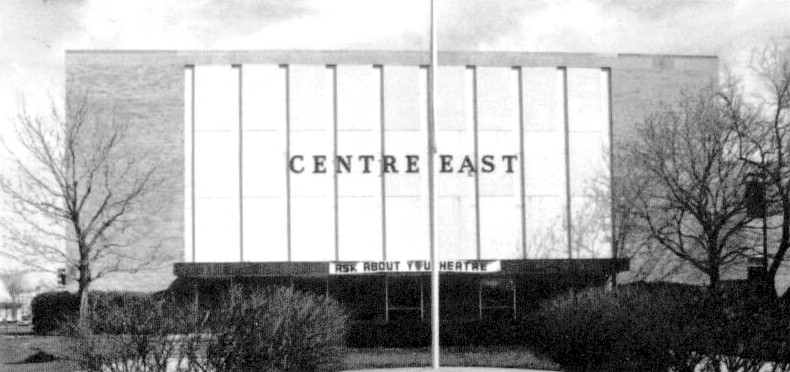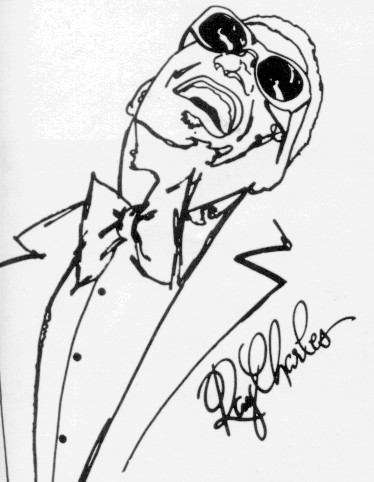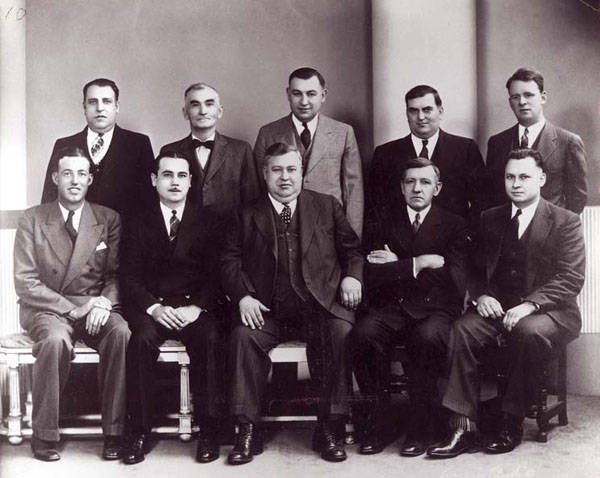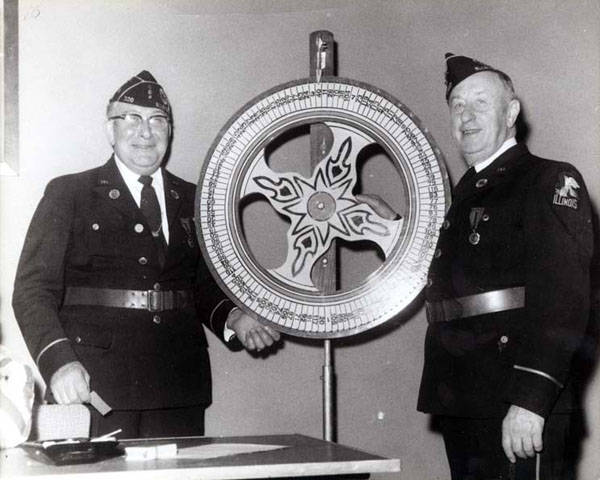10 Skokie Spirit
SKOKIE VILLAGERS have in recent decades had reason to take considerable pride in the efforts that they and their neighbors have made to make the community a better place to live. And the citizenry of Skokie, as that of almost no other village or city in the United States, has been faced with situations that have brought on national notoriety and dreadful memories of crimes against humanity. As a result, Skokie has had to meld together as a community both to promote the good and confront the bad.
“Skokie is not quite like any other place,” is the way village volunteer and resident Sue Schwartz described it. “The power of the village lies in its people.” The results of that statement are found in the village’s heritage, and perhaps more meaningfully in the events of modern times.
The history of community involvement predates the incorporation of Niles Centre. From the banding together of early pioneers to help each other eke out a living in the swamplands, to the support of the first merchants who set up shop in the area, to the organization of a dedicated and area-wide-recognized volunteer fire department company, volunteerism has characterized the Skokie spirit.
Under the same guiding principles, the influence of private leadership and cooperation in the development of contemporary local institutions and in common purpose became particularly evident in the 1950s. And today it is one of Skokie’s most tangible and admirable assets.
 Skokie Spirit stained glass window at the Village Hall
Skokie Spirit stained glass window at the Village Hall
Village Firsts
The civic spirit of Skokie’s residents has enabled the village to become an important and historic innovator in a number of different areas of endeavor. The efforts of private citizens have been responsible for making Skokie the first community in Illinois, and one of the first in the United States, to establish a Fine Arts Commission. Skokie was also the first Illinois community in which an official body of local government actively promoted fair housing practices for members of all minority groups. It was in Skokie, too, that the state’s first comprehensive, community-wide blood donor program was created. And Skokie is home to the uniquely original Orchard Village, which aids and guides the mentally handicapped.
These are just some of the most significant examples of the lasting, trend-setting policies and interests of the village and its residents. Most came about because of the efforts of interested citizens who encouraged their neighbors and their local government to respond to a need they recognized first. They are clear indicators of the uncommon civic spirit of Skokie.
The Fine Arts Commission
“Skokie was the first community in Illinois to use tax dollars to support the fine arts,” said Dorothy Litwin, director of Centre East’s Fine Arts Center and a member of the village’s Fine Arts Commission. The commission was established by the Board of Trustees in June 1966, after a group of interested village residents, including Charles Keim, Cay Jackson, and Jean Doney, petitioned the board for its creation.
“The village gave a general charge to support the arts,” Litwin recalled, “but it was up to the commission to establish a specific program.” One of the early steps commission members took was to create a newsletter, which is still published today in the “Arts and Entertainment” section of the village newsletter. Before long, the Fine Arts Commission was involved in an extensive list of projects, some of limited duration, others providing permanent additions to the village’s cultural life.
Skokie, the kinetic light sculpture by John David Mooney on the Village Green, was sponsored by the commission. The September visit a few years ago by the Artrain, which in turn was visited by nearly 8,000 area residents including many school children, was also a Skokie Fine Arts Commission project. Of the significant ongoing programs underwritten by the commission, perhaps the most well-known are performances at schools, parks, and the library. Funds for paid performers at the library come from the Fine Arts Commission.
The Skokie Blood Program
Late in 1971, officials at Skokie Valley Hospital were faced with a critical shortage of whole blood. When a doctor on the hospital staff turned to the village Board of Health for help, Mayor Albert Smith and the Board of Trustees moved quickly to establish the first community-wide comprehensive blood donor program in the state of Illinois.
The Blood Center at Chicago’s Michael Reese Hospital helped set up the project, and G.D. Searle & Company donated space at its Searle Parkway building, where the program is still headquartered. Skokie Girl Scouts prepared baked goods and acted as hostesses in the Searle facility. On November 29, 1971, Mayor Smith donated the first pint of blood for the new program.
From the beginning, the project has been of potential benefit to every resident of Skokie. Under the program’s terms, all residents of the village are entitled to get free blood anywhere in the U.S. should the need arise. Today the program is administered in conjunction with LifeSource, a joint venture of the Blood Center of Northern Illinois and the Mid-America chapter of the American Red Cross. LifeSource supplies sterile equipment, plastic bags for storing blood, and refreshments.
Donna Mohrlein, coordinator of the Skokie Blood Program and its only paid employee, points out that constant work is needed to keep blood donations high. “We are always looking for new donors,” she said, “because our donor base is getting older and the need for new blood always increases, especially with newer demands created by organ transplants and chemotherapy.”
Community blood drives are conducted during the afternoon of the second Wednesday of each month at the offices of G.D. Searle at 4901 Searle Parkway. Other drives are held periodically at other locations.
Orchard Village
The purpose of Orchard Village, according to respite director Barbara Jacobson, is to help mentally handicapped men and women “to live as independently as they possibly can.” To meet this basic goal, the center maintains a wide range of programs, most created to help residents learn to live and work with decreasing amounts of supervision. About 60 people live in the Orchard Village facility at 7670 Marmora Avenue. A half-dozen more live in two private apartments in the village.
Depending on the amount of supervision residents need, some work in sheltered workshops run by Orchard Village personnel. Others, with varying degrees of supervision, hold jobs at places such as W.W. Grainger and Old Orchard Shopping Center. Most of these workers have graduated from the janitorial program conducted at the Des Plaines campus of Oakton Community College.
Although funding comes from a variety of sources, including sales from a thrift shop, bingo games, donations from the United Way, the Illinois departments of Public Aid and Mental Health, as well as Social Security benefits from residents themselves, Orchard Village has enjoyed considerable support from the people of Skokie as well as from the village of Skokie. Prior to his retirement, Mayor Albert Smith was a frequent visitor, attending ground-breaking ceremonies for the new assembly room and kitchen (opened in September, 1987) and graduation ceremonies for the janitorial program.
Villagers Joining Together
Historic events such as the proposed march by neo-Nazis in 1977, the closing of Niles Township East High School, and the creation of so many different programs and activities designed to benefit the village and Skokie residents, are prime examples of how villagers have organized to solve specific problems. There are, however, dozens of other ways that villagers come together.
More than 150 organizations, associations and clubs are active in Skokie, in fields ranging from fine arts, education, politics, religion, and service groups, to athletics and hobbies. Parent-teacher associations have been created at every village school. Musical groups include the Skokie Valley Orchestral Association and the Skokie Valley Youth Symphony, the Choralaires and Harmonettes vocal groups, and the Skokie Valley Jazz Ensemble. Theatrical groups include Acting Up, the park district’s Devonshire Playhouse, Theatre 219, and the Upstage/Downstage Children’s Theatre, in addition to the well-known productions at Centre East. The Skokie Masonic Temple supports various chapters and lodges of the Freemasons. Other service groups include Knights of Columbus, Lions Club, Rotary Club, Kiwanis Club, Chamber of Commerce, and the Shriners.
Each of these organizations, and many more too numerous to mention, provides its members and guests with an opportunity to enrich their lives and perhaps serve their community. Some have made lasting contributions to the quality of village life. All provide villagers with a chance to participate in wide- ranging activities.
Generousity of Spirit
The residents of Skokie are clearly willing to share their time and resources to help improve conditions in the village and make village life richer, more secure, and more enjoyable. The annual Fourth of July parade, once organized by the government, is now handled almost entirely by volunteers. The creation of the Fine Arts Commission, Centre East, the Oakton Community College Skokie satellite campus, and other important village institutions were the work, primarily, of concerned citizen volunteers.
Certainly one cultural event in recent years typifies the involvement of Skokie residents in their community, the visit of the Artrain in 1985. The arrival of the state of Michigan’s Artrain was the culmination of a four-month whirlwind organizational effort spearheaded by the Fine Arts Commission, which ultimately involved the services of 400 volunteers.
The Artrain, in effect a five-railroad-car traveling art museum, tours the United States, making scheduled visits to communities, most much more rural than Skokie, in order to bring those municipalities art masterpieces from major American museums and corporate collections. The last car serves as a studio car in which local artists set up shop and actually demonstrate their art and craft techniques, which can range from modern painting to computer art to ceramics and glass-making.
Before coming to Skokie, its first and only Chicagoland stop, the Arttain had traveled through 25 states, stopping in approximately 300 communities.
Once the Artrain’s visit to Skokie was secured, villagers organized to turn the event into both an art festival and a major educational project. Working under a tight schedule, a program had to be planned, funds raised, committees formed, volunteers lined up, local artists selected, among many other agenda items.
With 400 volunteer workers pitching in, the job was accomplished. One of the most noteworthy aspects of the program involved volunteers going into the Skokie schools beforehand with lectures and filmstrips to acquaint and prepare the children for the art experience they would encounter on the Artrain.
When the Arttain pulled out of Skokie, about 8,000 school children and many adults had passed through it, making the festival one of the most memorable experiences in recent history.
 The visit of the Artrain in 1985 proved to be one of the most memorable examples of Skokie Spirit in the village’s history.
The visit of the Artrain in 1985 proved to be one of the most memorable examples of Skokie Spirit in the village’s history.
Centre East for the Arts
One of the most enduring examples of the civic spirit of the village is Centre East, a combined cultural and civic center that began as a community campaign to save the Niles Township East High School building.
Centre East began its operations as a center for the performing arts in the west wing of the building, days after the high school was officially closed in June, 1980. Its creation was the culmination of efforts by Mayor Albert Smith, the Illinois Arts Council, and dozens of local civic leaders and neighborhood residents.
In the eight years the center has been operating, its success has grown dramatically. During its premier season in 1980-1981, the total attendance for Centre East’s five stage productions was less than 5,000 people. By the 1986-1987 season, total audiences had swelled to more than 100,000. Since its founding, more than half a million people, including audience members, students, performers, and volunteer workers have participated in Centre East events.
Many of the biggest names in show business and the arts have appeared on the stage of the old high school. Performers in late 1987 and 1988 included Buddy Hackett, Rich Little, Shelly Berman, Hal Linden, Jose Greco, Rosemary Clooney, the Philip Glass Ensemble, and the Preservation Hall Jazz Band. Productions of the Nutcracker Suite ballet, The Hunting of the Snark, The Emperor’s New Clothes, and other theatrical classics as well as original adaptations were presented by a variety of performing groups.
Despite the star attractions and major productions, Centre East operates with the community in mind. Ticket prices are kept as low as possible, and the center provides a home for a variety of organizations involved in the fine arts.
“What began as part of a community campaign to save the buildings of its former high school has today become a source of community pride,” a Centre East press release proudly proclaims, “…Centre East, a total center for the performing arts, a cultural resource for not only Skokie and Niles Township but the entire Chicago metropolitan area.
 Centre East has been providing a stage for the performing arts since 1980
Centre East has been providing a stage for the performing arts since 1980
 Among the many famous performers who have appeared is jazz pianist/singer Ray Charles, caricatured at the left
Among the many famous performers who have appeared is jazz pianist/singer Ray Charles, caricatured at the left
Other Village Organizations
Each of the nearly 150 organizations active in Skokie has a story worth telling. Unfortunately, space does not permit even a brief mention of all of them. Some of the more historic or major groups are described in the Centennial History of Skokie.
 The Luxembourg Brotherhood of America’s Section15, founded in Niles Centre in 1905, is the oldest civic or fraternal organization still in existence in Skokie. Shown here are officers of the section in 1938, left to right: seated, Nick Kalmes, Pat Seul, Martin “Scotty” Krier, Paul Hermes, Joseph Freres; standing, Anton Krier, Jr., Anton “Tony” Seul, Val Krier, Bill Biegert, Sr., Adam Hohs.
The Luxembourg Brotherhood of America’s Section15, founded in Niles Centre in 1905, is the oldest civic or fraternal organization still in existence in Skokie. Shown here are officers of the section in 1938, left to right: seated, Nick Kalmes, Pat Seul, Martin “Scotty” Krier, Paul Hermes, Joseph Freres; standing, Anton Krier, Jr., Anton “Tony” Seul, Val Krier, Bill Biegert, Sr., Adam Hohs.
Mayer Kaplan Jewish Community Center
The roots of this historic yet thoroughly modern institution date back to 1903, when Jewish leaders in Chicago formed the Chicago Hebrew Institute to enrich the educational and cultural opportunities for the area Jews. The institution flourished for decades, becoming the Jewish People’s Institute (JPI) in 1922.
Reflecting the northward movement of many Chicago-area Jews, in 1945 the JPI established extension programs in Rogers Park and Northtown. The following year, the organization changed its name to the Jewish Community Center.
Operations of the Jewish Community Center in Skokie began in 1957, in a storefront that it promptly outgrew. In 1968, 3.7 acres of land were purchased along Church Street, the site of the present center. In September, 1971, an open house was held to mark the start of the Mayer Kaplan JCC’s first season. In 1985, the center merged with the Bernard Horwich JCC, which has been active in Rogers Park since the 1940s, resulting in today’s Mayer Kaplan/Bernard Horwich Jewish Community Center.
The JCC offers an extensive list of programs for children, adults, and senior citizens, most, but not all, of the Jewish faith. In October, 1986, a modern fitness center, equipped with Nautilus and Paramount exercise machines, and steam, sauna, and whirlpool baths was opened. The center also has a 75-foot swimming pool.
The center’s extensive early childhood programs range from day-care to nursery school to physical fitness, in addition to several day camps. Programs for adults and senior citizens include Judaic studies, folk dance, professional enrichment, personal support, and a variety of others too numerous to mention, including extensive physical fitness and exercise regimens.
 The Bernard Horwich/Meyer Kaplan Jewish Community Center at 5050 West Church Street, which began as a storefront operation in 1957, now offers a variety of services for health and entertainment activities
The Bernard Horwich/Meyer Kaplan Jewish Community Center at 5050 West Church Street, which began as a storefront operation in 1957, now offers a variety of services for health and entertainment activities
The Women’s Club of Skokie
Formed in 1926 at the suggestion of Dr. Louise Klehm, the Woman’s Club of Skokie (originally of Niles Center) is the oldest service club in the village. In its more than half-century of service, the organization has been involved in various forms of charity work, tree planting campaigns, support of the Red Cross, the preparation of lunches for senior citizens, and many other projects. Today, the club is smaller than in earlier years, but it continues to function in the spirit typical of the generosity of Skokie’s citizens.
The Garden Club of Skokie
Chartered by the state of Illinois on April 25, 1951, the club was founded “to promote interest in the development of more attractive gardens, to stimulate among amateurs the knowledge and love of gardening, and to show how well grown plant material may be used for decoration indoors as well as the outdoor living area.” Although many of its members have been involved in local, state, and national events during the intervening years, the goals of the club today are much the same as they were more than 35 years ago.
Skokie American Legion Post 320
“Twenty-eight servicemen and one war nurse” attended the organizational meeting of the post on December 18, 1931. Among the World War II veterans who served as its commanders were John O’Connell, a founder and chairman of Skokie Federal Savings and Loan Association, and Robert McGowan, a treasurer of Rand McNally.
By 1987, post membership had increased to 566. A number of changes to the appearance of the post have occurred recently. In 1986, two old structures adjoining the vintage building were demolished, one of which was the birthplace of Dr. Louise Klehm. In 1987, the M2 military tank, which had stood in front of the post for nearly 40 years, was judged a “nuisance” and removed.
Perhaps the best remembered triumphs of the post occurred in 1955, 1956, and 1957, when the “Skokie Indians,” the post’s drum and bugle corns, won three consecutive national championships. Judge Harvey Schwartz, long-time corporation counsel for the village, was a bugler on those championship teams.
 Two past commanders of Skokie’s American Legion Post 320: Herman Giannini (left) and Ray Haben
Two past commanders of Skokie’s American Legion Post 320: Herman Giannini (left) and Ray Haben
 Many Skokians served in the armed forces during World War II
Many Skokians served in the armed forces during World War II
Skokie Rotary Club
“The motto of Rotary Clubs is ‘Service above self,’” says former Skokie Rotary Club president and District 69 elementary school superintendent Ralph Johnson, “and that motto typifies the activities of the Skokie Rotary Club.”
The approximately 70 members of the Skokie Rotary support a variety of groups within the community, including Boy Scouts, Girl Scouts, Orchard Village, and the Junior Achievement program for high school students. It also supports a worldwide effort of Rotary Clubs International called “Polio Plus,” an international effort to rid the world of polio by the year 2005.
Volunteer Services of Skokie Valley
Launched as the result of a survey sent out to not-for-profit groups, this important agency, composed of volunteer workers, perhaps best exemplifies the unusual generosity of so many of Skokie’s residents. The Volunteer Services of Skokie Valley was formally established in 1973, its purpose to serve as a clearinghouse for volunteer requests from 80 not-for-profit organizations and agencies.
“We try to match volunteer workers and their special talents and skills with appropriate volunteer organizations,” reported Volunteer Services chairwoman Sue Schwartz. “We try to find positions that will be interesting and stimulating to the volunteers, as well as beneficial to the organizations and agencies.
The group now supplies volunteer workers to many village institutions and organizations, including Orchard Village, the Orchard Mental Health Center, American Cancer Society, American Heart Association, Hotlines, and various self-help and abuse groups. Volunteer Services also supplies volunteers for a court-watcher program, the special olympics, and various other worthwhile programs.
Skokie has indeed proved that it is a community filled with a generosity of spirit and an abundance of energy, which make it a village to be proud of both historically and in modern times.
Jewish War Veterans Post 328
Organized in 1947, Post 328 currently has about 350 members and meets once a month at the Skokie Valley Synagogue. According to post commander Ralph Caplin, membership is made up mostly of “World War II vets and a few from the Korean War.”
One of the major activities of the post is to provide entertainment programs for veterans in area Veterans Administration hospitals. Commander Caplin notes that the organization also “informs veterans of their entitlements from the V.A., counsels disabled vets and their wives and children, offers low-cost medical and life insurance, furnishes military funerals, and offers grave sites to indigent Jewish veterans.”
Skokie Kiwanis Club
About 38 men and women are members of the Skokie chapter of this well-known national service organization. Founded in the early 1950s, the Skokie chapter of the Kiwanis Club currently meets each Thursday for luncheons at the Holiday Inn.
The local Kiwanis provides scholarships for local children to attend park district camps, offers food baskets to the needy during the holidays, presents gift certificates for clothing and other necessities, and provides funds for medical services and items such as wheelchairs and crutches for the needy.
Skokie Lions Club
Originally organized in the 1970s and then disbanded due to lack of personnel and direction, the Skokie Lions Club was reestablished in 1984, primarily through the efforts of Mort Paradise and the urging of Mayor Albert Smith. During the first six months of 1988, membership increased from 15 to about 25 men and women.
“The Lions Club is the world’s largest service organization,” outgoing president Mort Paradise reported in 1988. “Its primary purpose is to help the blind all over the world.”
The Skokie club recently became affiliated with a Lions Club in India, helping to provide Indian citizens with eye glasses and other vision-related assistance. Locally, the club works with Niles Township high schools to provide eye glasses and initial vision screening programs. Meetings are held the third Tuesday of the month at Gullivers Restaurant.
Veterans of Foreign Wars Post 3854
Open to veterans who have served in wartime outside of the continental United States, VFW Post 3854 helps to sponsor the Special Olympics program, provides rehabilitation services for hospitalized veterans, and cares for widows and orphans. The organization also sponsors a home for orphans in Michigan.
The VFW’s well-known Poppy Day helps raise funds for many of its services. Post 3854 has donated television sets to area hospitals, provided funds for a kidney dialysis machine at Hines Veterans Hospital, and offers a number of ongoing entertainment projects for hospitalized veterans.